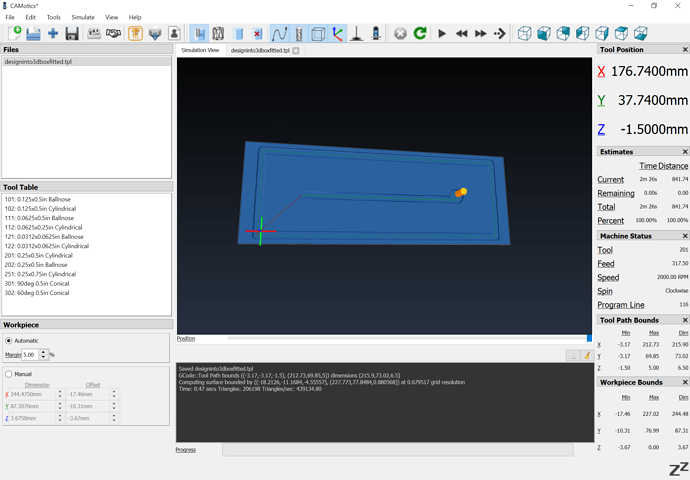Okay, working up a pocket cut which is:
- climb cutting (see: Climb vs conventional, definitive guidelines anyone? )
- ramps in (ditto)
We have the code:
rapid({x: px+plength/2-stepoffset/2, y: py+plength/2-stepoffset/2, z: 0}); // Go to start position
cut({x: px+pwidth-plength/2-stepoffset/2, y: py+plength/2-stepoffset/2, z: -dpp}); // Go to start position
arc(0, stepoffset, 0, -Math.PI, XY)//make turn
which gives us:
